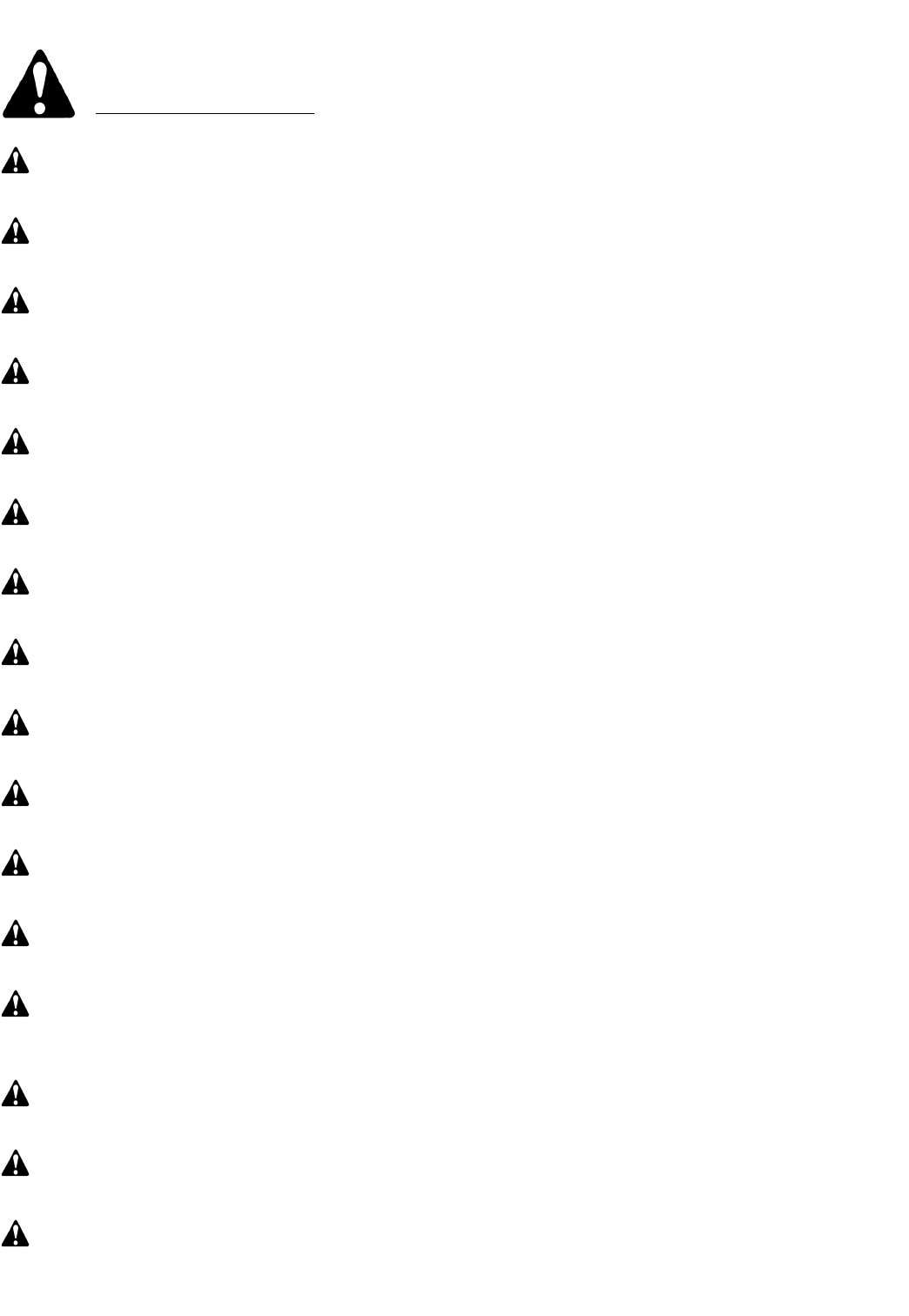
1510
SAFETY INSTRUCTIONS (continued)
Comply with state and local laws governing highway safety and movement of farm machinery on public roads.
The use of flashing amber lights is acceptable in most localities. However, some localities prohibit their use.
Local laws should be checked for all highway lighting and marking requirements.
When driving the tractor and equipment on the road or highway under 20 mph (32 kph) at night or during the
day, use flashing amber warning lights and a slow moving vehicle (SMV) identification emblem.
Always be sure the implement is in the proper raised position for transport.
Reduce speed when transporting mounted implements to avoid bouncing and momentary loss of steering
control.
Plan your route to avoid heavy traffic.
Transporting large round bales on front loaders can limit visibility. Keep load low and go slow if visibility is
obstructed. Always use extra care.
Do not drink and drive!
Watch for traffic when operating near or crossing roadways.
Turn curves or go up or down hills only at a low speed and at a gradual steering angle. Make certain that at
least 20% of the tractor’s weight is on the front wheels to maintain safe steerage. Slow down on rough or
uneven surfaces, and loose gravel.
Use extreme care and maintain minimum ground speed when transporting on hillside, over rough ground and
when operating close to ditches or fences. Be careful when turning sharp corners.
Never allow riders on either tractor or implement. Falling off can kill.
Be a safe and courteous driver. Always yield to oncoming traffic in all situations, including narrow bridges, inter-
sections, etc.
Do not exceed 20 mph (32 kph). Reduce speed on rough roads and surfaces.
Make sure large round bales transported on tractor rear 3 pt. hitch do not obstruct visibility of tractor’s flashing
lights or SMV sign.
When transporting large round bales, keep load as low as practical to maximize tractor stability.
TRANSPORT SAFETY
INSTRUCTIONS (continued)
ASSEMBLY
——————————————————
Refer to the “exploded views” on pages 19-23 of this
manual.
Carefully follow instructions for final assembly.
Remove the bucket from your front end loader. Check
your loader to make sure it is in good working order.
Check all frame mounting bolts to make sure they are
tight.
Place the main frame of the bale spear attachment on
the universal euro tool carrier on the loader.
Raise loader slightly and retract tilt cylinders until latch
closes.
NOTE: Latch automatically closes on global carrier.
Raise the loader and main frame slightly so that the
bottom of the main frame is about two or three inches off
the ground. Engage tractor parking brake and shut off the
engine.
Place some solid blocking under the main frame of the
bale spear attachment for safety.
A. On the Model GLB-2200, insert the long, forged
main spear into the casting socket and align the cross
hole in the spear with the hole in the socket. Install the
1
/
2
” x 3” bolt and tighten the nut.
Place the two short stabilizer spears into the sock-
ets on the bottom of the main frame. Secure with the
5
/
16
”x 1
3
/
4
” bolts provided.
B. On the Models GLB-3000, GLB-330, and GLB-340,
install the long, forged main spears into the casting
sockets in the main frame and align the cross hole in
the spear with the hole in the socket. Install the
1
/
2
”x 3”
bolt and tighten the nut on each spear.
OPERATION
——————————————————
The operator is responsible for the safe operation of this
equipment. The operator must be properly trained.
Operators should be familiar with the attachment, tractor,
and loader and all safety practices before starting
operation.
Make sure all operators have read the
Owner’s/Operator’s Manual and are familiar with the
instructions and the safety rules of operation.
Be sure tractor is properly counter-balanced with
weights before attempting to lift any load with the Bale
Spear attachment.
If you are handling bales with both the front end loader
and the 3 pt. hitch on the tractor, always load the 3 pt.
attachment first and unload last.
The bale spear is to be used only for handling hay bales.
Do not use for digging rocks, pulling out fence, or as a
craning device with a chain over the spear.
LARGE ROUND BALES:
Using the bucket tilt cylinders, adjust the angle of the
spear(s) so they are parallel with the center of the hay
bale.
With the tractor, push the spear(s) into the large hay
bale. Make sure you have penetrated the hay bale far
enough so the bale doesn’t want to come off the end of
the spear(s). If, when you initially pick the bale up, it tends
to droop forward, this would indicate you have not pene-
trated the bale far enough.
Tilt the ends of the spear(s) upward (about 15-20
degrees) when transporting the hay bales. This will
reduce any tendency for the bale to slide off the spear(s)
while being transported.
When you have placed the hay bale in the desired loca-
tion, it is recommended to tilt the spear ends slightly
downward (5-7 degrees) so as you pull away from the
bale it will slide off the spear(s) more easily. Different
location and circumstances will determine the best with-
draw angle to use.
NOTE: Always make sure bale spear fully penetrates the
bale. Partial penetration locates all the weight of the bale
on the outer end and can damage spear.
CAUTION!
ALWAYS CHECK LATCH PINS BEFORE TILTING OR
OPERATING ANY ATTACHMENT.


















